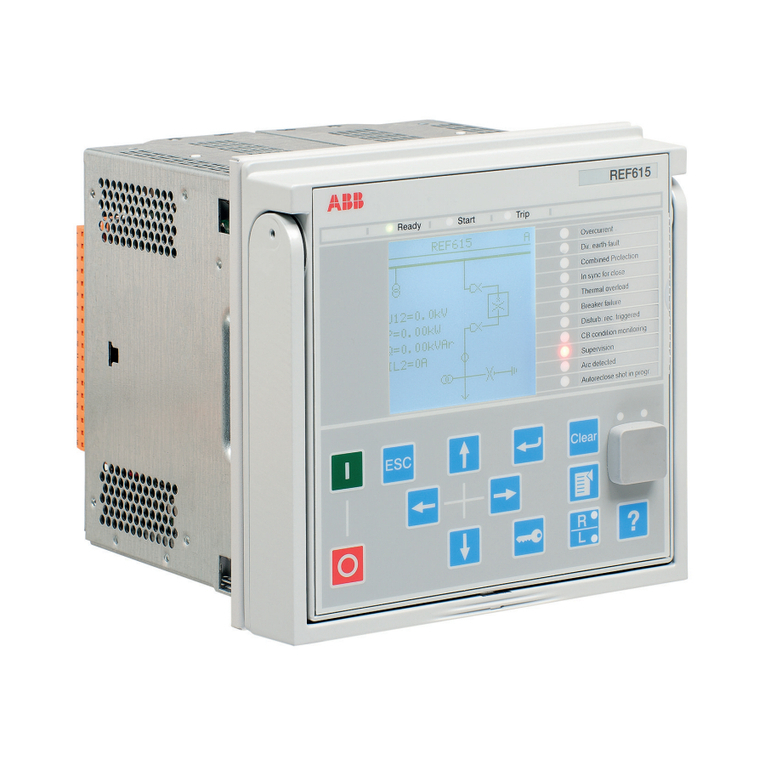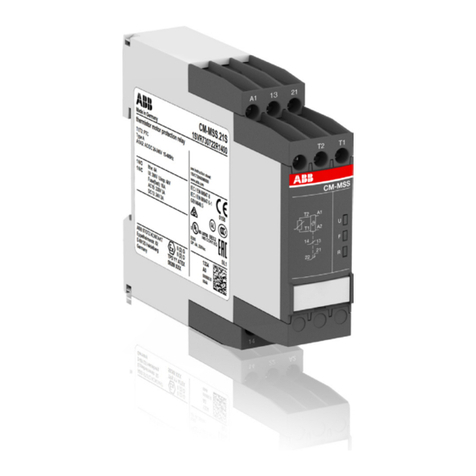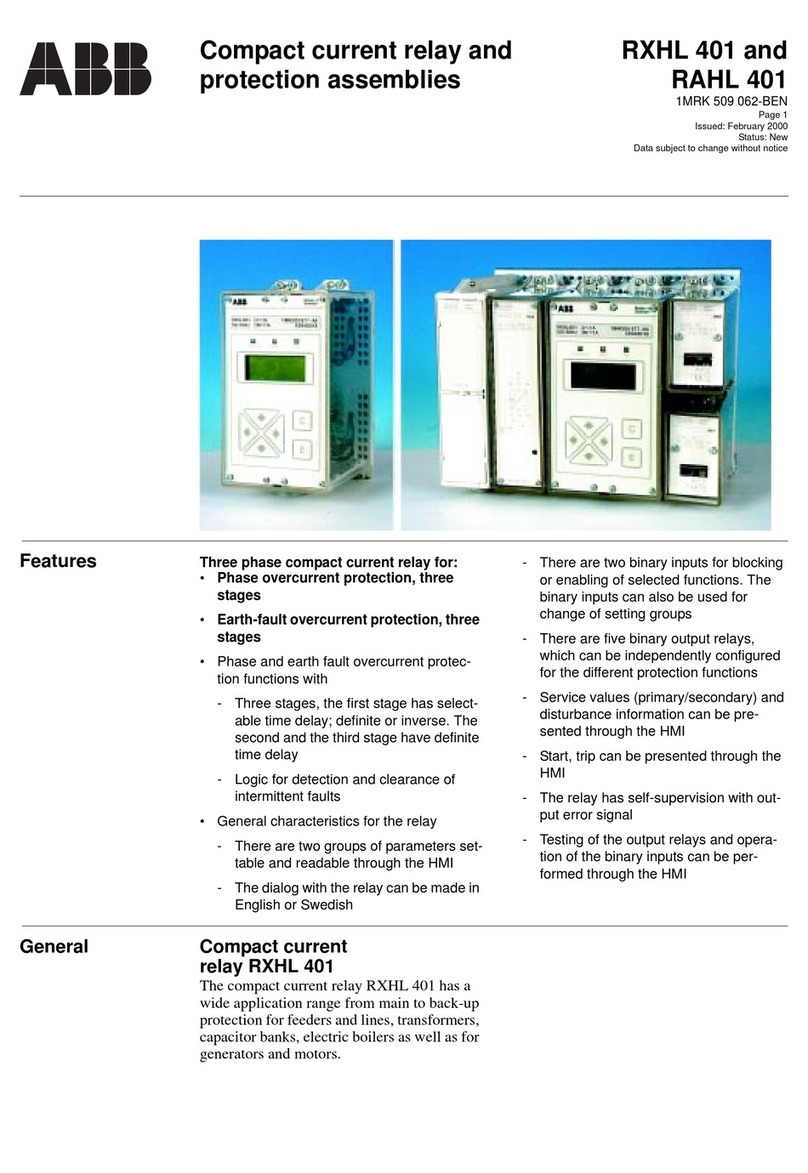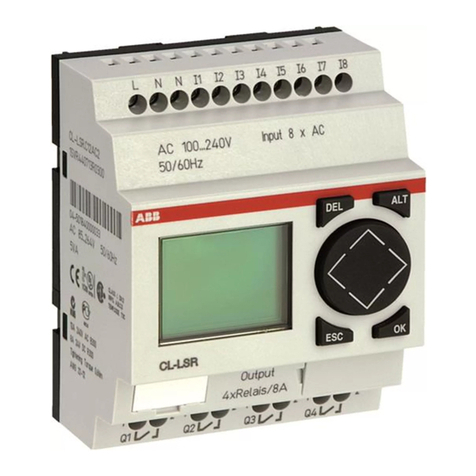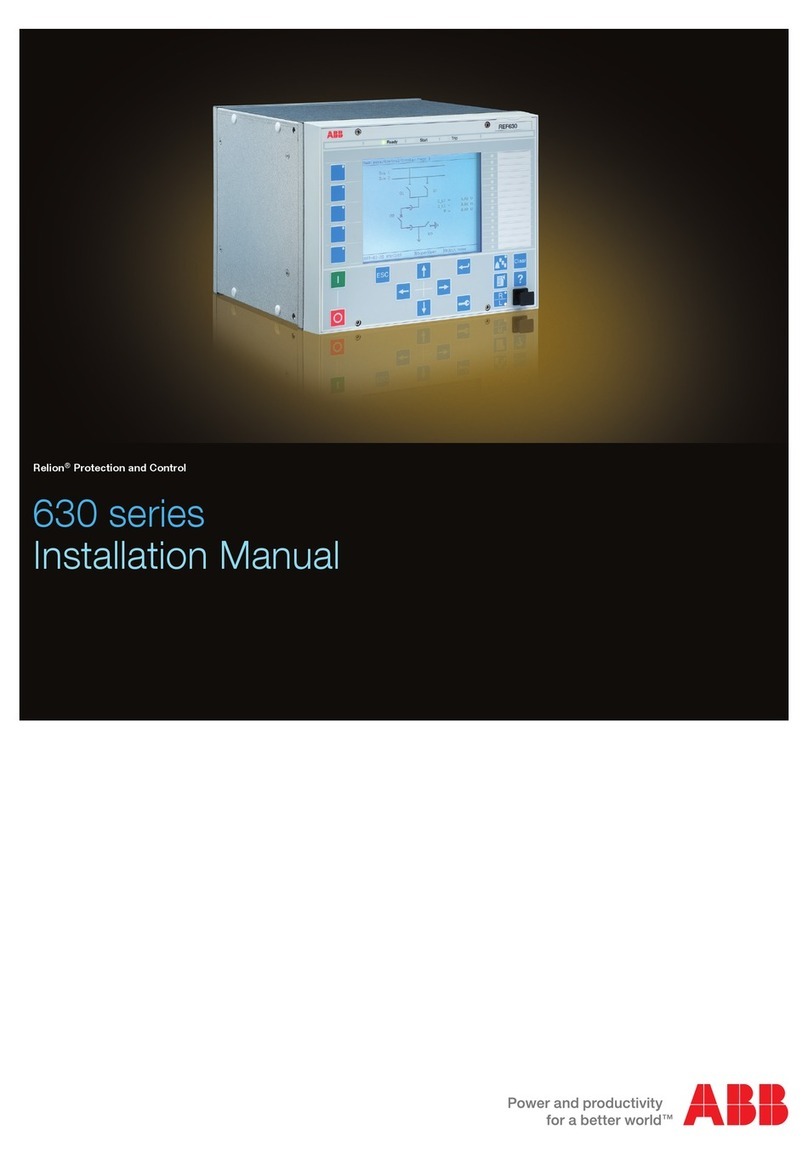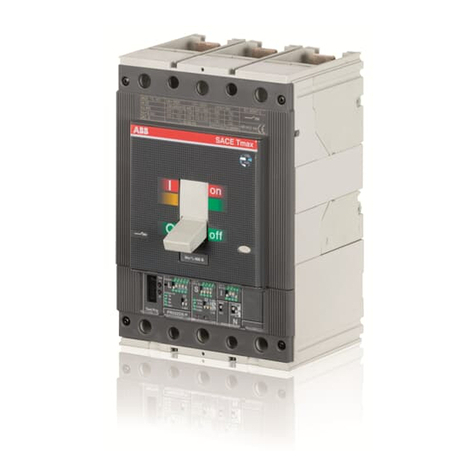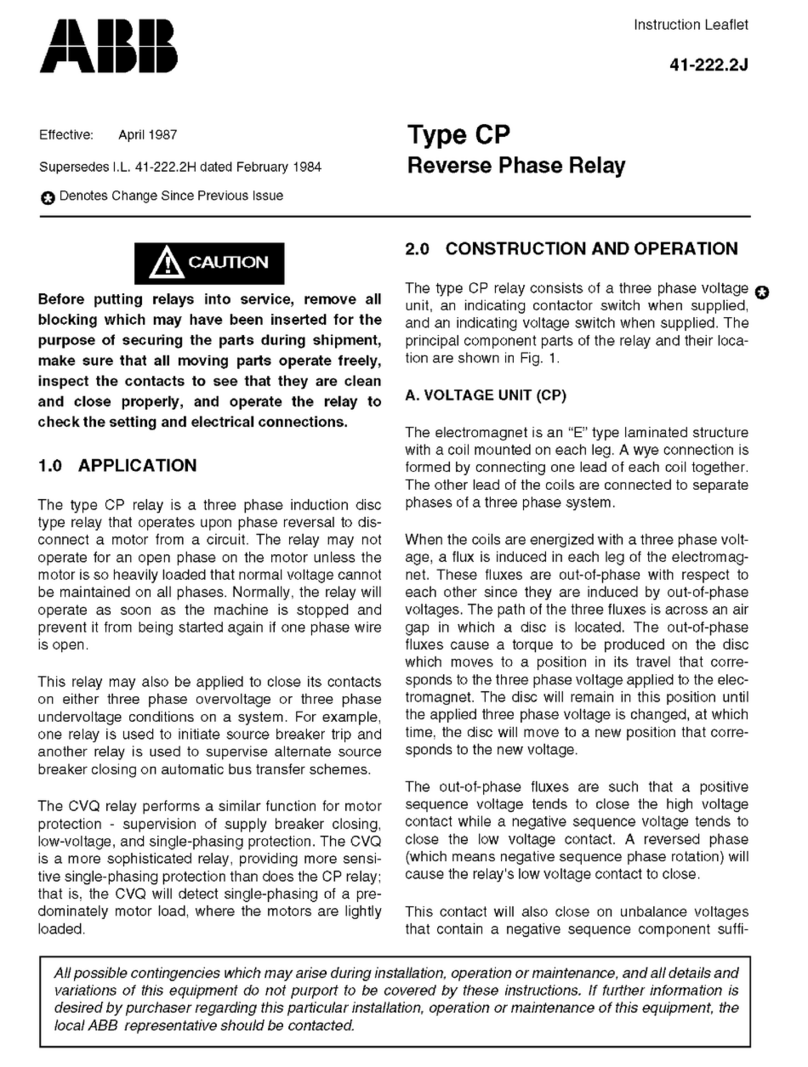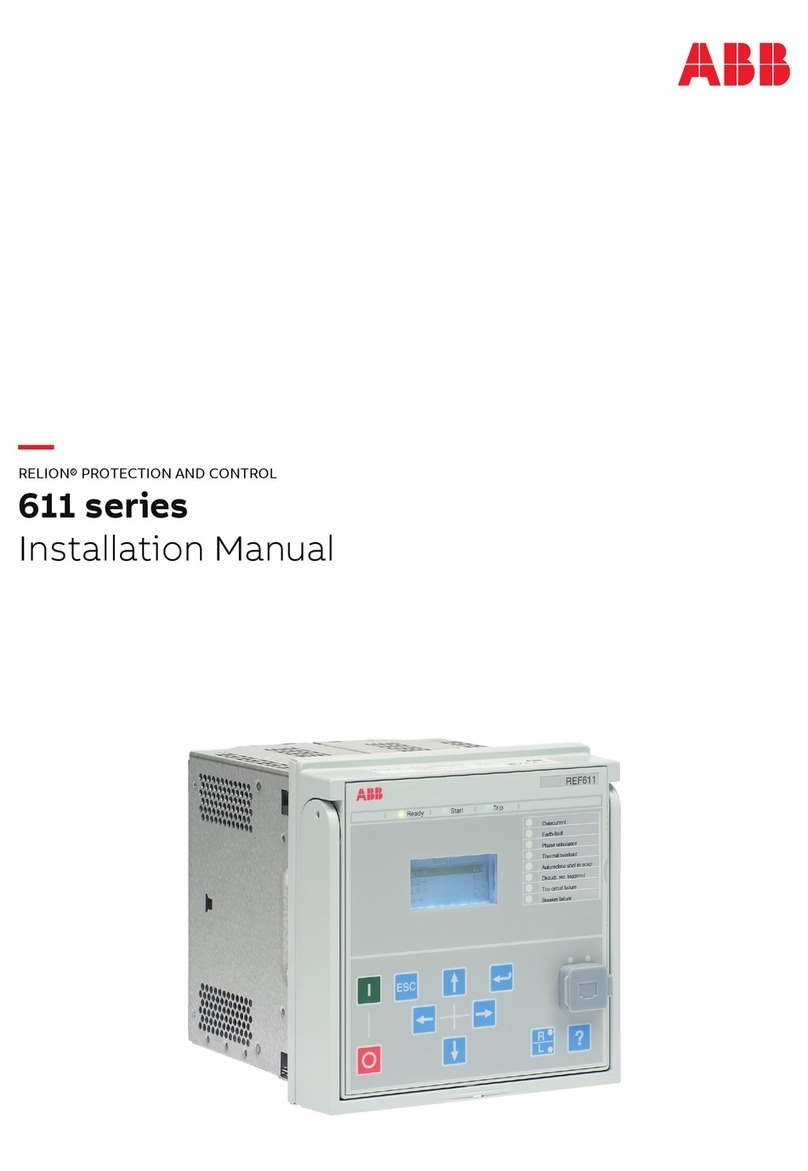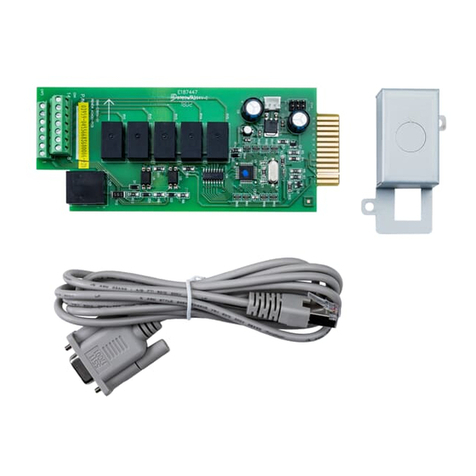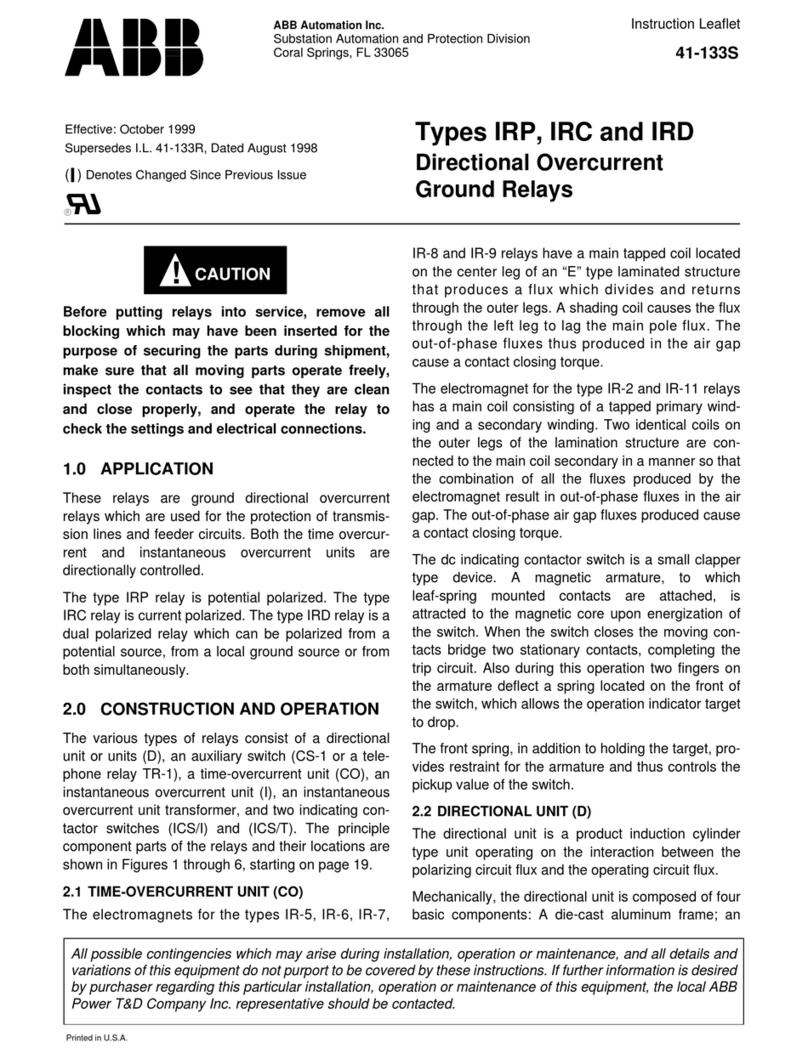
ABB Automation Inc.
Substation Automation and Protection Division
Coral Springs, FL 33065
Instruction Leaflet
All possible contingencies which may arise during installation, operation or maintenance, and all
details and variations of this equipment do not purport to be covered by these instructions. If further
information is desired by purchaser regarding this particular installation, operation or maintenance
of this equipment, the local ABB Power T&D Company Inc. representative should be contacted.
Printed in U.S.A.
ABB
ABBABB
ABB 41-579.1N
Effective: September 1980
Supersedes I.L. 41-579.1M dated March 1980
Denotes Change Since Previous Issue
Type TD-5
Time Delay Relay
*
resistor
(
Rs
)
.
The
silicon
power
regulator
(
Z
)
is
a
10
watt
Zener
diode
mounted
on
an
aluminum
heat
sink
.
The
series
resistor
(
Rs
)
is
a
3
‘
/
2
inch
resistor
which
is
tapped
for
24
/
32
volt
dc
and
48
/
125
volt
dc
relays
.
CAUTION
:
Before
putting
relays
into
service
,
operate
the
relay
to
check
the
electrical
connec
-
tions
.
Close
the
red
handle
switch
last
when
plac
-
ing
the
relay
in
service
.
Open
the
red
handle
switch
first
when
removing
the
relay
from
service
.
°
APPLICATION
Rheostat
and
Scale
Plate
The
rheostat
(
T
)
provides
a
variable
resistance
for
the
R
-
C
time
delay
circuit
.
It
is
of
wire
-
wound
construction
,
which
minimizes
resistance
change
with
temperature
.
Do
not
remove
the
knob
from
the
rheostat
shaft
,
since
it
is
not
easy
to
replace
the
knob
in
the
calibrated
position
.
The
timing
scale
is
non
-
linear
as
explained
in
the
section
under
Printed
Circuit
.
The
type
TD
-
5
relay
is
used
in
timing
applications
where
accuracy
,
repeatability
and
fast
reset
are
required
.
Its
principal
use
is
in
time
delayed
distance
relaying
and
in
breaker
failure
timing
applications
.
It
is
a
dc
relay
capable
of
direct
application
to
station
batteries
.
It
covers
0.05
to
30
seconds
in
4
different
ranges
.
For
dual
independent
timing
refer
to
TD
-
52
relay
,
I
.
L
.
41
-
579.3
.
Potentiometer
The
potentiometer
(
P
)
,
provides
a
biasing
voltage
which
keeps
the
silicon
controlled
rectifier
(
SCR
)
turned
off
until
the
capacitor
voltage
reaches
the
potentiometer
brush
voltage
.
It
is
of
wire
-
wound
construction
and
has
a
locking
nut
which
should
not
be
loosened
unless
the
relay
is
be
-
ing
re
-
calibrated
.
CONSTRUCTION
The
type
TD
-
5
relay
consists
of
a
reference
voltage
circuit
,
a
rheostat
(
T
)
and
scale
plate
,
a
voltage
biasing
potentiometer
(
P
)
,
a
printed
circuit
containing
static
timing
components
,
an
output
telephone
relay
(
TR
)
,
and
an
indicating
contactor
switch
(
ICS
)
.
An
auxiliary
relay
(
TX
)
is
supplied
on
some
types
to
override
bounce
of
the
initiating
contact
.
Printed
Circuit
The
printed
circuit
contains
a
diode
(
Dj
)
which
protects
the
static
components
in
case
the
relay
is
connected
with
reverse
polarity
,
a
limiting
timing
resistor
(
RjJ
,
timing
capaci
-
tor
(
C
)
,
a
parallel
resistor
(
Rp
)
which
makes
the
calibrating
scale
non
-
linear
,
and
a
silicon
controlled
rectifier
(
SCR
)
.
The
printed
circuit
also
contains
a
diode
(
D
2
)
to
reverse
bias
Reference
Voltage
Circuits
The
reference
voltage
circuit
provides
a
fixed
supply
voltage
to
the
R
-
C
time
delay
circuit
and
protects
the
static
components
from
high
voltages
.
It
consists
of
a
silicon
power
regulator
and
a
series
Courtesy of NationalSwitchgear.com

